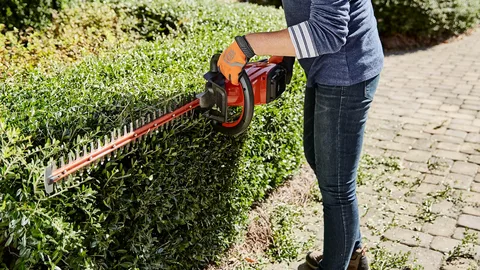Maintaining a neat and tidy garden often requires the use of hedge trimmers. However, while these tools help us create beautiful landscapes, they can also contribute to environmental damage depending on the type used. In this article, we’ll explore the environmental impact of different types of hedge trimmers, examining how gas-powered, electric, and battery-powered models affect the planet.
Understanding the Types of Hedge Trimmers
Before diving into their environmental impact, it’s important to understand the main types of hedge trimmers available:
- Gas-powered hedge trimmers – Typically the most powerful, these are favored by professionals for heavy-duty trimming.
- Electric hedge trimmers (corded) – Powered by electricity through a cable, they are lighter and quieter.
- Battery-powered (cordless) hedge trimmers – These run on rechargeable batteries and offer mobility without gas emissions.
Gas-Powered Hedge Trimmers: High Emissions and Noise Pollution
Gas-powered models have the most significant environmental footprint. They rely on fossil fuels, releasing carbon monoxide, nitrogen oxides, and hydrocarbons into the air. These emissions contribute to air pollution and global warming.
Additionally, gas hedge trimmers produce high noise levels, which can disturb local wildlife and human communities. When considering the environmental impact of different types of hedge trimmers, gas models are often seen as the least eco-friendly option.
Electric Hedge Trimmers: Cleaner but Limited
Corded electric trimmers are a cleaner alternative to gas-powered ones. They emit no direct greenhouse gases during use and are significantly quieter. However, their impact still depends on the source of electricity. If the power comes from coal or natural gas, the environmental benefit is reduced.
Despite this, they are a solid choice for environmentally-conscious users with small to medium-sized gardens.
Battery-Powered Hedge Trimmers: A Balanced Solution
Battery-powered trimmers strike a balance between performance and environmental friendliness. They offer mobility without the emissions of gas engines and produce minimal noise. However, the environmental impact of different types of hedge trimmers includes the mining and disposal of lithium used in batteries.
Proper recycling and choosing high-quality, long-lasting batteries can help mitigate these concerns.
Choosing the Eco-Friendly Option
When selecting a hedge trimmer with the environment in mind, here are a few tips:
- Avoid gas-powered models unless absolutely necessary.
- Opt for electric or battery-powered trimmers for smaller jobs.
- Recycle batteries properly and maintain tools to extend their lifespan.
- Use trimmers during daylight hours to reduce noise disturbance.
By making thoughtful choices, gardeners can significantly reduce the environmental impact of different types of hedge trimmers.
Conclusion
As awareness of environmental issues grows, it’s important to consider the ecological footprint of even our garden tools. Whether you’re trimming a small hedge or tackling a large property, understanding the environmental impact of different types of hedge trimmers can help you make a more sustainable choice. Electric and battery-powered models offer cleaner alternatives that protect both the environment and your community.

